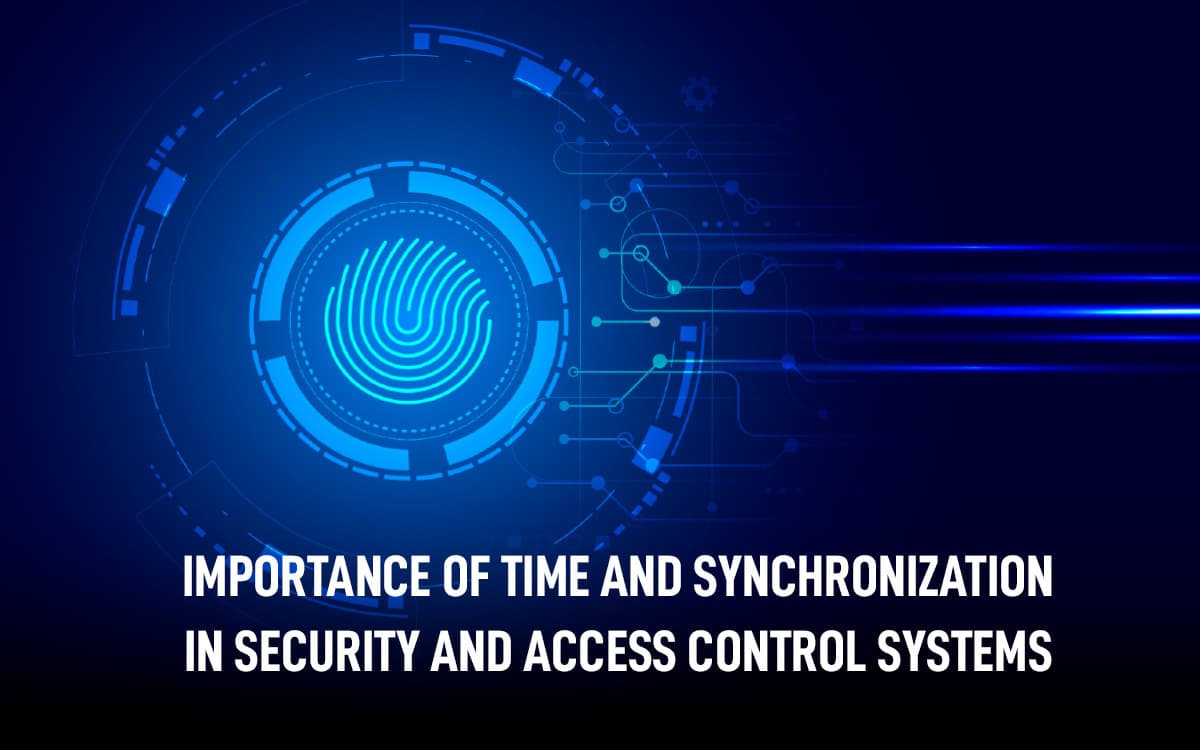
Importance of Time and Synchronization in Security and Access Control Systems
Introduction
In security and access control systems, accurate time and synchronization play a critical role in ensuring system integrity, event sequencing, and operational effectiveness. This article explores the importance of time and synchronization in security and access control systems and highlights how the Safran SecureSync serves as an ideal solution for addressing these requirements.
Importance of Time and Synchronization
Event Sequencing and Logging:
Accurate timekeeping is essential for sequencing events accurately within security and access control systems. It enables proper event logging and audit trails, allowing system administrators to reconstruct timelines and investigate incidents effectively.
Access Control Authorization:
Precise time synchronization is crucial for access control systems to enforce time-based access rules effectively. Accurate time stamps ensure that access permissions are granted or revoked based on the specified time constraints, enhancing security and preventing unauthorized access.
Alarm and Event Management:
In security systems, timely and synchronized notifications of alarms and events are vital. Precise time synchronization enables systems to trigger alarms, activate video surveillance, or initiate response protocols precisely, minimizing response time and enhancing overall system effectiveness.
Video Surveillance Integration:
Integration with video surveillance systems relies on accurate time synchronization. Aligning timestamps across access control and video surveillance systems allows for seamless correlation of events, enabling effective video retrieval and evidence gathering during investigations.
Challenges in Time and Synchronization
Network Latency and Jitter:
In distributed security and access control systems, network latency and jitter can cause variations in time synchronization. These variations may result in discrepancies between system components, compromising the accuracy and reliability of event sequencing and system coordination. High network traffic, network congestion, or varying network conditions can introduce latency and jitter, affecting the synchronization precision.
Scalability and System Complexity:
Large-scale security and access control systems often consist of numerous interconnected components and devices spread across multiple locations. Achieving accurate and consistent time synchronization across a complex and scalable system presents a significant challenge. Ensuring uniform time distribution and synchronization accuracy across diverse hardware, software, and network infrastructure requires a robust time synchronization solution.
Security Vulnerabilities:
Time synchronization mechanisms can be vulnerable to security threats, potentially impacting the overall security of the system. Malicious actors may attempt to manipulate or compromise time synchronization signals, leading to unauthorized access, system disruption, or the injection of false events. Protecting time synchronization protocols and implementing secure time server solutions are crucial to mitigating these security risks.
Compliance and Regulatory Requirements:
Security and access control systems often operate within regulatory frameworks and compliance requirements. Compliance may involve demonstrating accurate and traceable time synchronization for auditing, reporting, and adherence to industry-specific regulations. Ensuring compliance with these standards necessitates a reliable and compliant time synchronization solution that meets the necessary regulatory requirements.
Time Accuracy Maintenance:
Time accuracy is not static, and maintaining accurate time references over extended periods is essential. Factors such as temperature fluctuations, oscillator drift, or aging can affect the stability and accuracy of internal clocks in time synchronization systems. Employing a time synchronization solution that incorporates compensation mechanisms, such as disciplined oscillators or periodic calibration, helps maintain long-term accuracy and reliability.
Safran SecureSync: An Ideal Solution
Highly Accurate Time Synchronization:
The Safran SecureSync provides highly accurate time synchronization to ensure precise event sequencing and coordination within security and access control systems. It leverages advanced technologies, including atomic clocks and GPS receivers, to deliver reliable and precise time references with exceptional stability and accuracy.
Robust Security Features:
The SecureSync incorporates robust security features to protect against unauthorized access and tampering. These features include secure management interfaces, cryptographic algorithms, and access control mechanisms, ensuring the integrity and confidentiality of time synchronization data. By employing secure protocols and stringent access controls, it safeguards against potential security vulnerabilities.
Anti-Jamming Capabilities:
The SecureSync integrates anti-jamming technologies to mitigate the impact of intentional interference. By employing intelligent signal processing and frequency diversity techniques, it enhances system resilience, ensuring continuous and reliable time synchronization even in the presence of jamming threats. These capabilities minimize the risk of synchronization disruptions caused by deliberate interference.
Anti-Spoofing Measures:
Advanced anti-spoofing measures in the SecureSync prevent the acceptance of counterfeit time signals. Signal authentication and source verification technologies ensure the authenticity of time references, minimizing the risk of unauthorized access or manipulation within the system. These measures enhance the overall security of time synchronization and protect against potential spoofing attacks.
Compliance with Security Standards:
The SecureSync is designed to meet stringent security standards, ensuring compliance with industry-specific regulations. Compliance with these standards guarantees that security and access control systems meet the necessary security requirements and adhere to operational best practices. By utilizing the SecureSync, organizations can demonstrate compliance with regulatory frameworks and industry standards in their security and access control systems.
Conclusion
Time and synchronization are critical components of security and access control systems, facilitating event sequencing, access control authorization, alarm management, and system integrity. The Safran SecureSync offers a reliable and robust solution, providing highly accurate time synchronization, incorporating advanced security features, and addressing the challenges associated with time synchronization in complex and distributed systems. By leveraging SecureSync, organizations can enhance the integrity, effectiveness, and security of their security and access control systems, ensuring precise event sequencing, reliable access control authorization, timely alarm management, and compliance with regulatory requirements.


